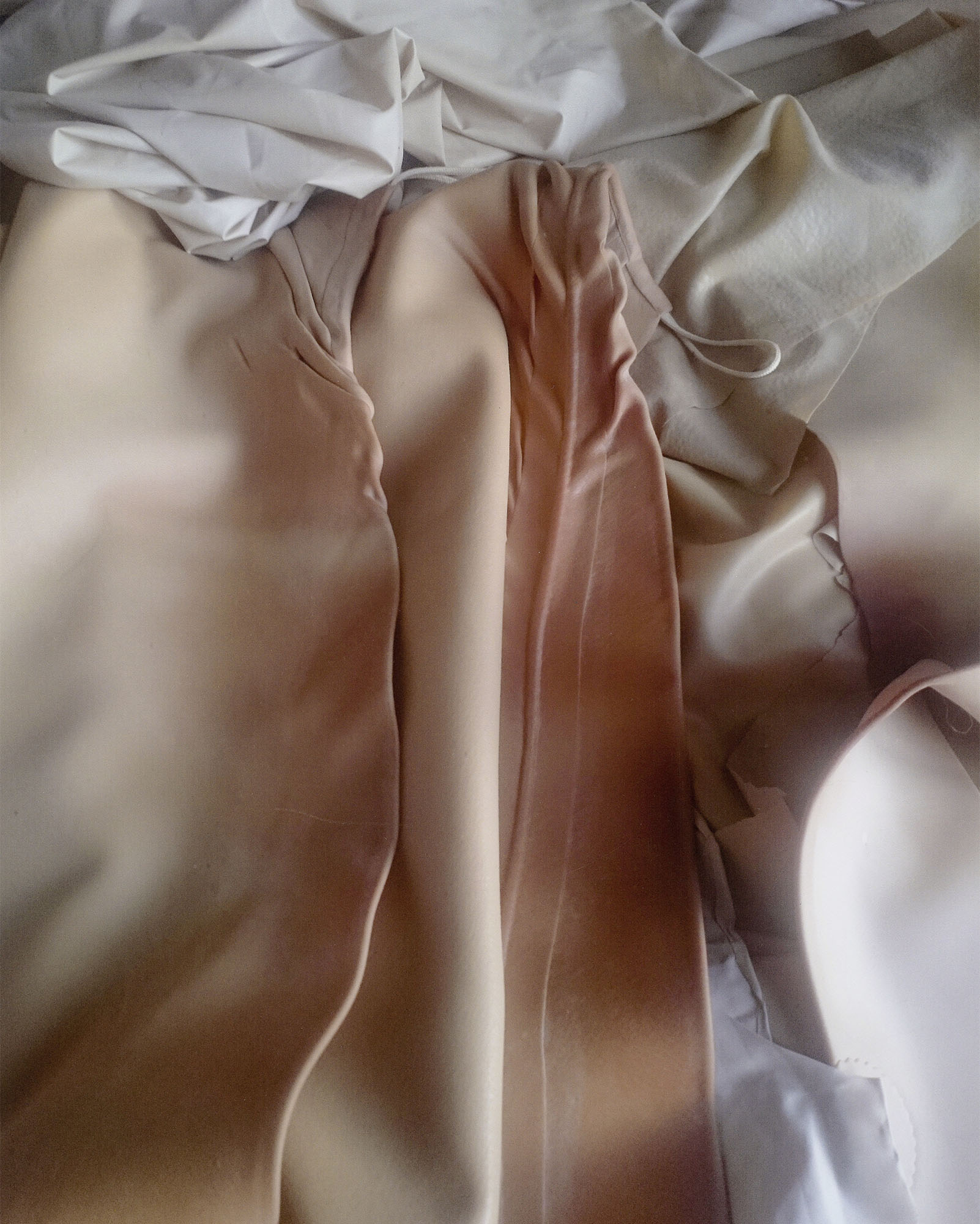Rubber, next to dust, is a characteristic material used by Nowicka; a substitute for skin. Its velvety surface, the seemingly biological softness of its forms and the colour of flesh, evoke associations with the human body. On the one hand, such layering, covering and revealing individual details of the composition is an expression of the aestheticization of the depiction, but on the other – uncovers deformations, prosthetics, and imperfections. The photographed object is placed between an organic form and an inanimate object, between an emotional experience and a well-thought-out artistic structure.
The warm tones used in the composition of the photograph and the way in which Nowicka arranges linear strips of flesh-coloured material that partially cover and uncover the plane, reveal Nowicka’s painterly experience. By photographing the material that resembles the texture and colour of the skin, the artist evokes associations with corporeality, intimacy, and close interpersonal relations. The amorphous nature of the composition, however, raises anxiety and associations with deformation and destruction. The title of the work clearly indicates the trope of imperfections, suggesting some flaws in the aestheticization of the body and its visual representation.





